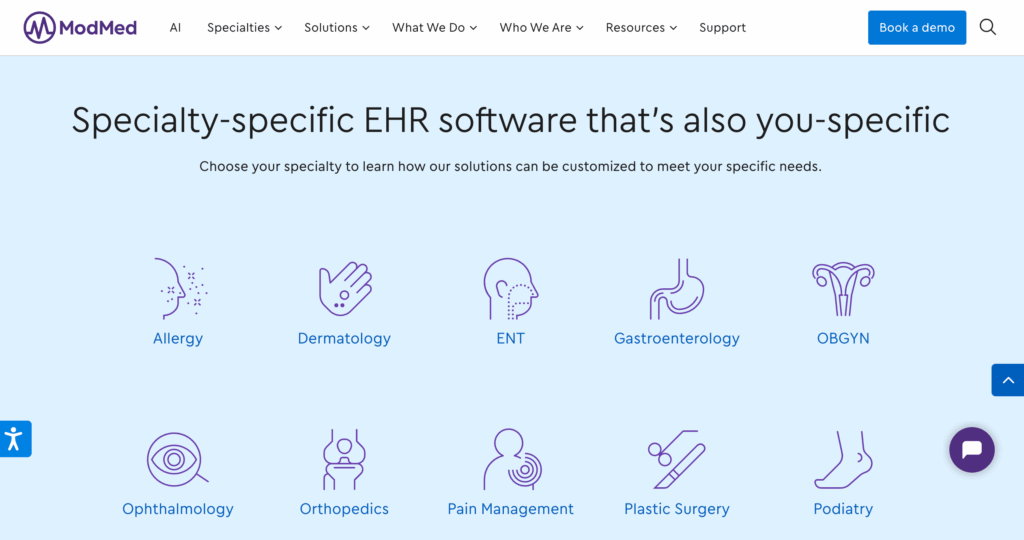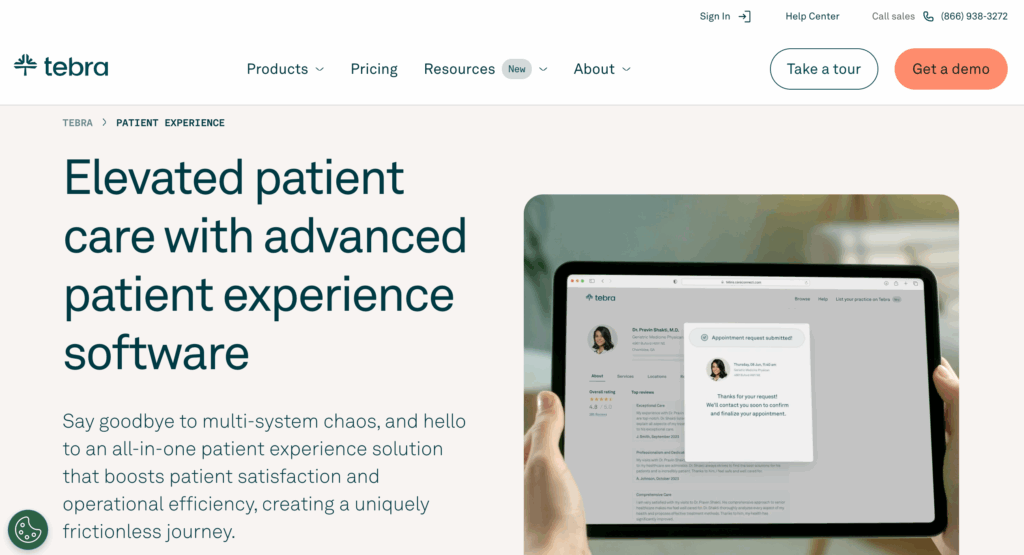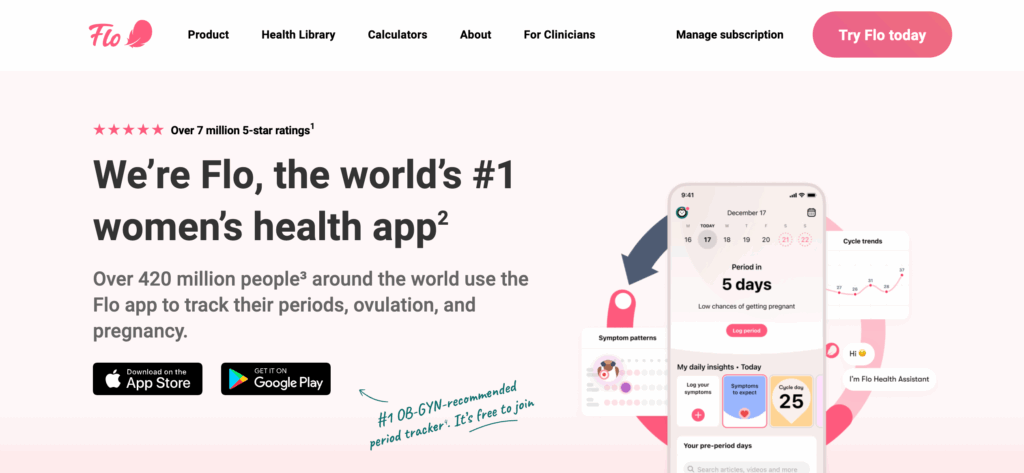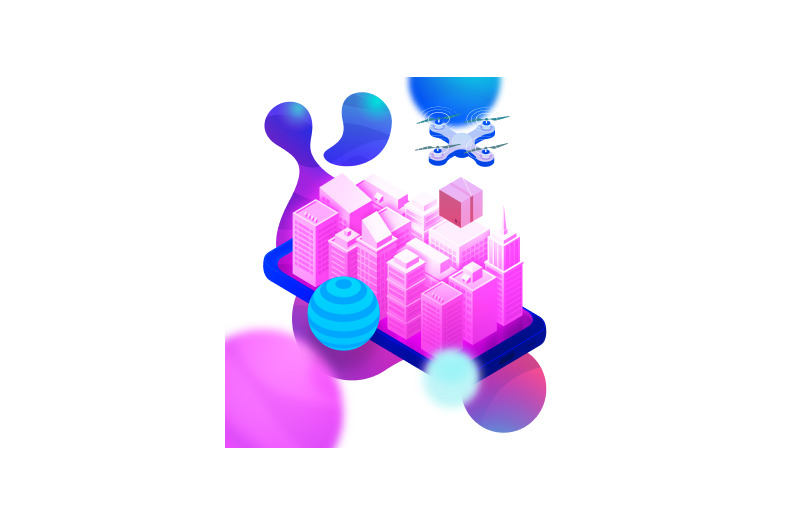The healthcare ecosystem is evolving rapidly, especially after the coronavirus outbreak. In this ever-changing landscape, healthcare technology has become the backbone of efficient, patient-centered care.
According to Fortune Business Insights, the global healthcare IT market size is projected to grow to USD 981.23 billion by 2032, i.e., a CAGR of 15.7% during the forecast period.
The demand for healthcare solutions such as Electronic Health Records, Telehealth Solutions, Mobile Health Applications, and non-clinical solutions such as Revenue Cycle Management, Custom Relationship Management, is forecasted to increase from 2025-2032. Such healthcare software is designed to serve individuals (patients), groups (healthcare workers, pharmacists), and enterprises (clinics, hospitals, pathology labs, etc.).
These digitized solutions have laid the groundwork for transformative healthcare, revolutionizing how care is delivered and experienced.
In this comprehensive guide, we’ll delve into the top 10 types of healthcare software available on the market. We’ll explore the software developed for various stakeholders and share some popular solutions currently used by medical health practitioners and individuals.
Top 10 Most Popular Healthcare Software Solutions
1. Electronic Health Records (EHR) Systems
The Electronic Health Record (EHR) system is one of the most essential healthcare software solutions in the market. EHRs are digital versions of patient charts that store patient data, such as medical histories, diagnoses, and treatment plans.
The layout of the EHR system is similar to a CRM, only customized to help healthcare providers manage patient information more effectively. It includes patients’ information, such as prescriptions, medical records, and consulting history.
There are two types of EHR software – electronic medical record systems (EMR) and Electronic Patient Record Software (EPR). While EMR provides a digital perspective of patient charts with data such as medication types and dosages, procedures, EPR is used only by hospitals to store and process their patient information.
You can think of EHR as the central nervous system of your practice, securely storing and managing a patient’s complete medical journey. These systems improve accuracy, reduce medical errors, and facilitate seamless communication between doctors, patients, and other healthcare providers.
Available Software Examples: ModMed, eClinicalWorks

2. Telemedicine Software
Telemedicine platforms for remote patient care have gained immense popularity, especially after the COVID-19 pandemic. It enables remote consultations between patients and healthcare providers via video calls, messaging, and virtual check-ups.
It has become an essential part of remote healthcare solutions, improving access to care, especially for patients in underserved or remote areas. Along with increased access to care, telemedicine software has reduced healthcare costs.
There are two different types of telemedicine software – synchronous telemedicine software and asynchronous telemedicine software. Synchronous telemedicine software facilitates real-time patient-provider communication to make clinical decisions. Similarly, asynchronous telemedicine software only enables sending reminders and other messages without the need for live sessions.
Telemedicine enables healthcare providers to diagnose, treat, and follow up with patients without the need for in-person visits, revolutionizing patient care.
Available Software Examples: Teladoc Health, Amwell
3. Healthcare Practice Management Software
Healthcare practice management tools for clinics are designed to simplify the daily operations. This software automates administrative tasks such as appointment scheduling, billing, and patient record management. It facilitates the healthcare workers to focus on what matters most – patient care, rather than focusing on manual activities.
Healthcare management software aims to improve patient engagement, reduce no-shows, and streamline the overall workflow of healthcare providers.
You can implement this software to enhance your hospital’s overall operational efficiency and provide better patient experiences.
Available Software Examples: Tebra, DrChrono

4. Medical Diagnosis Software
Medical diagnosis software for doctors facilitates to exchange of patient records anonymously to fill information gaps, and improve diagnostic accuracy. It uses advanced algorithms and artificial intelligence to assist doctors in identifying diseases and conditions based on patient data, symptoms, lab results, and medical imaging.
The key benefits of medical diagnosis software are:
- Faster and more accurate diagnoses
- Enhanced support for differential diagnosis
- Reduced diagnostic errors and delays
- Helps in managing patient loads in overburdened systems
Such a tool is especially used in the diagnosis of complex or rare cases that have no room for human error. With rising patient volumes and increasing complexity of care, AI-driven medical diagnosis tools are becoming essential companions to healthcare professionals, enabling more accurate and timely medical decision-making.
Available Software Examples: Infermedica, Isabel Healthcare
5. Medical Billing Software
Managing billing and insurance claims can be one of the most time-consuming aspects of running a healthcare facility. That’s where medical billing software steps in—automating the entire billing cycle, from patient invoicing to insurance claim processing and payment tracking.
Medical billing software speeds up reimbursements, ensures compliance with healthcare regulations, and reduces administrative overhead. By automating billing and coding, this software enhances financial operations and ensures faster reimbursements.
Moreover, streamlining such workflows allows healthcare providers to focus more on patient care and less on financial administration.
Whether you’re a small clinic or a large hospital, implementing the right medical billing system can significantly improve revenue cycle management, enhance accuracy, and reduce administrative burdens.
Available Software Examples: MicroMD, CollaborateMD

6. Electronic Prescribing (e-Prescribing) Software
Electronic prescribing (e-Prescribing) software is transforming how prescriptions are issued and managed in modern healthcare settings. It enables healthcare providers to send prescriptions electronically to the patient’s preferred pharmacy.
Unlike hand-written or paper-based prescriptions, electronic prescription reduces medication errors, improving patient safety, and simplifying the prescribing process.
Moreover, it has become a vital component of a transformative healthcare ecosystem, bridging gaps between doctors, patients, and pharmacies seamlessly.
The key benefits of electronic prescription software are:
- Eliminates prescription errors and miscommunications
- Enhances patient safety and medication adherence
- Reduces administrative workload for providers
- Enables faster pharmacy processing and refills
- Improves overall efficiency in clinical workflows
Implementing this software can help you streamline medication management and enhance patient safety.
Available Software Examples: RXNT, SureScripts
7. Medical Database Software
Medical database software is designed to store, organize, and retrieve vast amounts of patient-related data in a secure and structured manner. The objective of medical database software is to enable healthcare professionals to quickly access patient records, treatment histories, lab results, and other critical data for informed decision-making.
This type of software has become vital for the healthcare system, ensuring data integrity, supporting interoperability between systems, and enhancing compliance with data protection regulations like HIPAA.
Doctors can use medical database software to cross-reference a patient’s case for better treatment decisions or educate themselves about clinical cases.
The key benefits of electronic medical database software are:
- Centralized and secure storage of medical records
- Easy access to historical and current patient data
- Supports analytics and reporting for research and treatment optimization
- Enhances collaboration between healthcare departments and facilities
Medical database software emphasizes data-driven healthcare decision making, facilitating hospitals, research centers, and clinics.
8. Patient Portal Software
Patient portal software is designed to improve communication between patients and healthcare providers. It provides patients 24/7 access to their health information, schedule appointments, view lab results, and medication histories all in one place.
Patient portal not only facilitates the patients, but also the healthcare providers. It reduces administrative workload, minimizes no-shows, and improves overall patient engagement.
Key features of patient portal software are:
- Secure Messaging
- Online Bill Payment
- Preview Prescription and Refill Request
- Appointment Schedule
Moreover, patient portal software has become one of the core components of patient-centered care.
Available Software Examples: MyChart

9. Health Information Exchange (HIE) Software
Health Information Exchange (HIE) software facilitates the secure sharing of patient health information between different healthcare organizations. It ensures that patient data is accessible across different healthcare systems and providers.
HIE solutions are essential for collaborative care for improving care coordination and enhancing patient outcomes. It provides real-time, up-to-date information access to doctors, specialists, labs, and hospitals.
The key benefits of electronic medical database software are:
- Care continuity across multiple providers
- Reduce administrative and clinical redundancies
- Improve the accuracy and speed of diagnoses
- Ensures compliance with healthcare data regulations (like HIPAA)
Implementing health information exchange software can help you with better care coordination, fewer duplicate tests, and improved patient outcomes.
Available Software Examples: eHealth Exchange, HealthShare by InterSystems
10. Health Tracking Apps
Health tracking apps are the most common form of healthcare software solutions that have become an integral part of personal wellness management. These mobile apps help users monitor various aspects of their health, such as physical activity, heart rate, sleep quality, calorie intake, menstrual cycles, and even stress levels, right from their smartphones.
Moreover, healthcare tracking apps are mostly integrated with wearable technology such as smartwatches for easy access to the real-time health status.
Some of the best health tracking apps for monitoring fitness and wellness also offer real-time insights, personalized recommendations. Access to patient-generated health data through these apps can lead healthcare providers to more holistic and preventive care approaches.
Available Software Examples: MyFitnessPal, Flo Health

Choosing the Right Type of Healthcare Software
Selecting the appropriate healthcare software requires careful consideration of your practice’s specific needs, goals, and budget. Here are some key factors to keep in mind:
- Identify Your Core Needs:
Determine which areas of your practice would benefit most from software implementation or upgrades.
- Scalability:
Choose software that can grow with your practice as it expands its services and patient base.
- Integration Capabilities:
Ensure the software you select can integrate with your existing systems or other software you plan to implement in the future.
- User-Friendliness:
Opt for software with an intuitive interface that is easy for your staff to learn and use, minimizing training time and maximizing adoption.
- Security and Compliance:
Prioritize software that meets all relevant data security and privacy regulations, such as HIPAA.
- Vendor Support and Reliability:
Select a reputable vendor that offers reliable customer support, regular updates, and ongoing maintenance.
- Cost and ROI:
Carefully evaluate the total cost of ownership, including implementation, training, and ongoing subscription fees, and assess the potential return on investment in terms of increased efficiency, reduced costs, and improved revenue.
The Future of Healthcare Software
The healthcare software landscape is constantly evolving, driven by advancements in technology and changing healthcare needs. Some key trends to watch include:
- Increased Interoperability: Greater emphasis on seamless data exchange between different healthcare systems to improve care coordination.
- Artificial Intelligence (AI) and Machine Learning (ML): Integration of AI-powered tools for healthcare tasks such as diagnosis support, drug discovery, and personalized treatment plans.
- Telehealth and Remote Monitoring Expansion: Continued growth in virtual care delivery and remote patient monitoring to improve access and convenience.
- Cloud-Based Solutions: Increased adoption of cloud-based healthcare software for its scalability, accessibility, and cost-effectiveness.
- Focus on Patient Experience: Development of software solutions that prioritize patient engagement, communication, and convenience.
Digital Transformation in Healthcare
The future of healthcare is undeniably digital. As we move through 2025 and beyond, the continued acceleration of technology in the sector is reshaping how patient care is delivered, managed, and experienced. From streamlining clinical workflows to empowering patients through real-time health tracking, software solutions are driving measurable improvements in both operational performance and patient outcomes. For healthcare providers aiming to stay ahead, embracing these digital tools is no longer optional—it’s essential. With the right solutions in place, the healthcare industry is well-positioned to deliver smarter, faster, and more personalized care for all.

